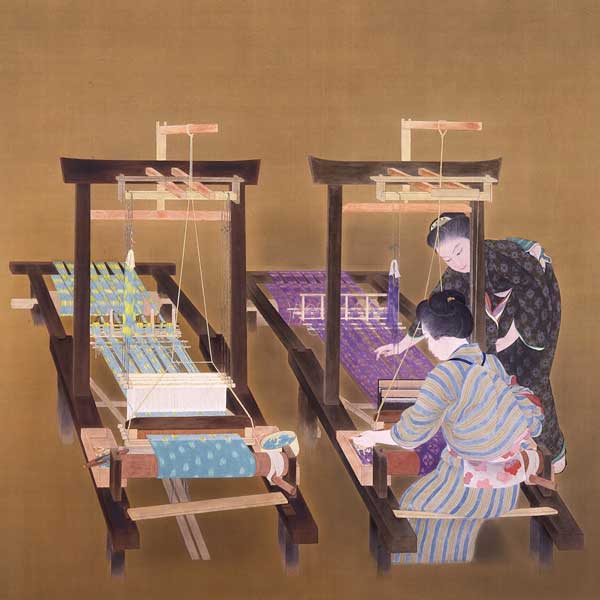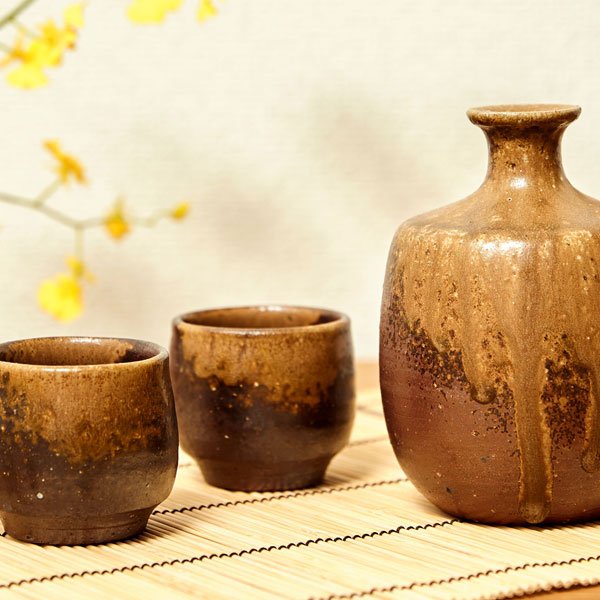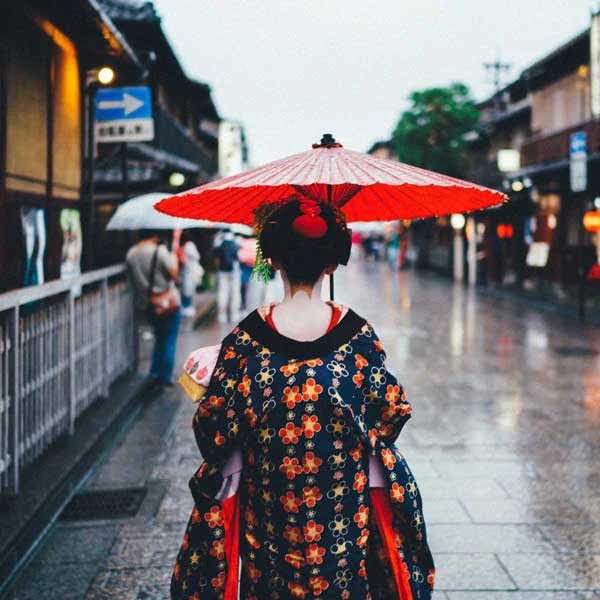© Numata Nori, Sushi with Nori
Seaweed has been a part of Japanese cuisine for many centuries, and the type of dried, salty seaweed known as nori has found a global audience in recent years. However, nori is not the only edible seaweed in Japan. In fact there is a huge variety of different seaweeds in the waters around Japan which you might want to try!
We’ll take a look at how edible seaweed makes it from sea to table, and why you’ll want to start adding Japanese seaweed to your diet!
© Numata Nori, Japanese Seaweed
The term seaweed is the common name for marine plants and macroalgae (algae large enough to see) that grow in the sea, but is also sometimes used for plants from rivers and lakes.
In terms of its edibility, there are no known toxic or poisonous forms of seaweed, meaning technically every type is edible, but not necessarily palatable! However, the inexperienced forager may confuse seaweed with other plants, so it’s best to leave the harvesting to the pros.
Women Gathering Seaweed by Katsukawa Shunko, 18th Century
Seaweed has been used in Japanese cuisine for hundreds of years. Eight different types of seaweed were listed as tax products in documents dating back over 1500 years, while poetry referring to edible seaweed can be found in the Manyoshu, a collection of Japanese poems from the 8th century. Since then, each different type of seaweed has played an important role not only in the kitchen, but also in Japanese culture, often used as offerings and at festivals. These days, seaweed in Japan is dried and packaged and easily available to the average household.
© Numata Nori, Nori Sheets
In the west, nori is the most well-known type of edible seaweed, but there are actually many different types, each with their own flavours and textures.
The six main types of seaweed that you will come across in Japan are:
Nori (海苔): Dried laver sold in sheets, usually (but not always) salted. Usually eaten as a snack, or sprinkled over rice or noodles.
Kombu (昆布): Dried bull kelp sold in thick, leathery sheets that need rehydrating. Usually used to make dashi stock.
Wakame (若芽): A type of kelp called undaria pinnatifida. Sold dry, and rehydrated for cooking, often as an ingredient in soup.
Hijiki (ひじき): sargassum fusiforme. Sold shredded and dried, rehydrated for cooking.
Mekabu (めかぶ): A different part of the wakame plant. Slimy in texture, sold dried and fresh.
Umi budo (海ぶどう): Sea grapes. Sold washed and raw in southern Japan.
Harvesting Hijiki Seaweed
Each type of seaweed has its own method of preparation. Traditionally, many types of seaweed were harvested by divers, leaving their harvest volume to the elements.
These days, some types of edible seaweed are commercially produced in facilities where temperature and light can be controlled more easily.
Nori is typically grown in a more controlled way using nets, and is harvested in late autumn to early winter using mechanical harvesters atop a boat. The nori is only harvested once it gets to the desired length of about 20 cm.
© Numata Nori, Harvesting Seaweed
Kombu, on the other hand, is usually harvested in the summer months. The harvesters go out on boats and use long wooden poles with a hook to pull the kombu off its “root”. The roots are left for the kombu to regrow the next year, and the kombu is laid out on rocks to dry in the sun. Overall, it’s a fairly natural process.
Other types vary between naturally picked or farmed, such as wakame which is hung from strings underwater.
Dried Konbu, via Fotolia
Most edible types of seaweed are sold dried, but some can be found fresh and raw depending on the type and season.
Nori sheets are created by washing the nori in fresh water, then mincing it up and pressing it into sheets which are mechanically dried. Traditional methods were much more time consuming and involved drying the nori sheets in the sun.
Drying Seaweed by Dmitry Petelin
Kombu however, continues to be dried in the sun before being reshaped and packaged.
Wakame is in a world of its own, as there are many ways to dry it out, such as with ash, on wooden planks, in the shade, or by boiling and then cooling it and leaving it to dry.
Given the particular texture of sea grapes, they are usually sold fresh, as the whole point is to experience the caviar-like moisture.
© Numata Nori, Nori over Noodles
Given the many differences between the various species of seaweed, you won’t be surprised to learn that it varies by type.
However, given that most types of seaweed are dried to be sold, you can find the vast majority of them year-round online, or if you’re in Japan, at the supermarket. Provided they’re kept in the right conditions, dried seaweed can last a very long time, so the taste doesn’t change depending on when you buy it.
Umi Budo, by nevillevlogz
Although umi budo are eaten fresh, they are produced all year-round. They thrive at temperatures of around 24°C, and as they are typically harvested in the warmer southern isles of Okinawa, that means the tastiest time to eat them is in spring and autumn. Sadly, these are much harder to come by abroad, though.
© Numata Nori, Harvesting Seaweed
Delicious edible seaweed is produced all over Japan, but that doesn’t mean that every type thrives in every location.
Working our way from the north downwards, Hokkaido, Japan’s northernmost region, produces hijiki, wakame, and kombu. However, it is most famous for its production of kombu, as Hokkaido accounts for around 90% of Japan’s entire kombu production. It’s said that the colder waters make its flavour so exceptional.
Drying Seaweed, 19th Century
The Honshu area, Japan’s central island, mostly produces hijiki, wakame, and nori. The most famous area for nori production is the Ariake Sea, but it is also produced in other areas like Chiba and Aichi.
The southernmost areas of Japan, Kyushu and Okinawa, are most well-known for umi budo. They also produce hijiki, and a less common type of seaweed known as mozuku.
© Numata Nori, Sushi with Nori
After discovering all of the different types of seaweed, it is probably fairly clear that each type has its own characteristics, so they are used in different ways.
Nori is perhaps the most adaptable of them all, as its crisp and thin properties mean it can be wrapped, seasoned, or soaked with ease. It is most famous for being wrapped around sushi rolls, but it’s also often used whole as a topping for ramen, or cut up into small pieces to be put on rice or other dishes. It’s also common to see it in a salty snack form.
If you’re making sushi, you will need some authentic Japanese wasabi. We answer your Most Common Questions about Wasabi.
© City Foodsters / Creative Commons, Dashi
Kombu is the umami bomb of Japanese cuisine. It is most commonly used to make dashi, a simple Japanese broth, for which you only need to boil kombu for a few minutes. Sometimes kombu is also used for wrapping or curing fish, too.
Wakame is often put in seaweed or other soups for some fiber, and sometimes rehydrated for salads. Mekabu and hijiki are similar, and used for soups, salads, and sides. Umi budo are usually eaten by themselves perhaps with some vinegar or soy sauce.
Now that you’ve got the knowledge at your fingertips, you’ll be wanting to eat some seaweed yourself! If you’re lucky enough to be in Japan, you can find a full selection in every supermarket. For some of the best Japanese nori, head over to Numata Nori, either online, or you can visit their store in Asakusa, Tokyo.
Outside of Japan you may be able to find some at your local Asian supermarket, or you can try ordering online. Just be sure to choose seaweed grown in Japan if you want the quality of Japanese produce: here are a few you can try if you’re hankering for Nori, Hijiki, or Umi Budo from Japan! You can also check out the 25 Essential Japanese Ingredients You Can Buy Online.
JO SELECTS offers helpful suggestions, and genuine recommendations for high-quality, authentic Japanese art & design. We know how difficult it is to search for Japanese artists, artisans and designers on the vast internet, so we came up with this lifestyle guide to highlight the most inspiring Japanese artworks, designs and products for your everyday needs.
All product suggestions are independently selected and individually reviewed. We try our best to update information, but all prices and availability are subject to change. As an Amazon Associate, Japan Objects earns from qualifying purchases.













LIFESTYLE | July 28, 2023